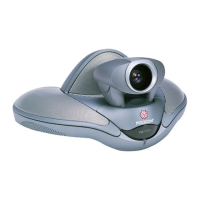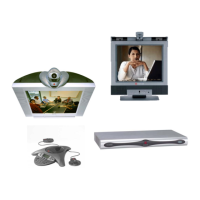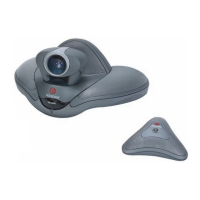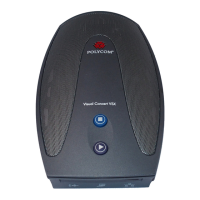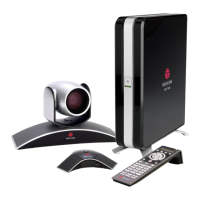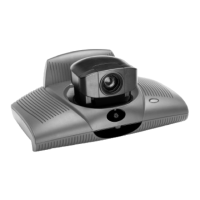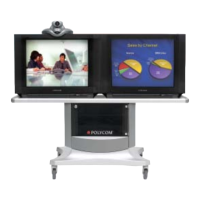
Do you have a question about the Polycom vsx 7000 Series and is the answer not in the manual?
| Network Protocols | H.323, SIP |
|---|---|
| Video Standards | H.264 |
| Audio Standards | G.711, G.722, G.722.1, G.728 |
| Camera | Integrated or external PTZ camera options |
| Microphone | Integrated or external microphone options |
| Connectivity | Ethernet |
| Data Standards | H.239 |
| Network Interface | Ethernet |
| Video Inputs | Composite, S-Video |
| Video Outputs | HDMI, DVI-I, VGA, Component, Composite |
| Audio Inputs | RCA |
| Audio Outputs | RCA |
| Display Outputs | VGA, S-Video |
| Content Sharing | H.239 |
| Operating Temperature | 0°C to 40°C (32°F to 104°F) |
Information about SKC as a provider and integrator of telephony and conferencing solutions.
Details on accessing SKC's 24/7 testing facilities for Polycom video conferencing systems.
Guidance on obtaining more product information and contacting SKC's video support team.
Instructions on how to answer incoming video calls when auto-answer is enabled or disabled.
Steps for initiating a video call using the Polycom unit's remote control.
Procedure for disconnecting a video call using the remote control.
Methods for placing calls using the directory or recent call history.
How to adjust audio volume and mute/unmute microphones using the remote.
Overview of the MultiPoint Plus Software License Key for multipoint conferencing.
Steps for adding participants to an ongoing multipoint video conference.
Procedure for disconnecting individual sites from a multipoint call.
How to save multipoint call configurations in the address book.
Information on connecting more than 4 sites using an external bridge service.
How to control camera direction, zoom, and focus for both local and remote views.
Explanation of camera presets for quick aiming and zooming to specific locations.
Steps for saving camera positions and zoom levels as presets.
How to recall saved camera presets during a video conference.
Instructions for switching the video input to a document camera or DVD/VCR.
Description of the Visual Concert accessory for sharing PC graphics.
How to connect a laptop or desktop PC to the Polycom unit for content sharing.
Steps to share PC content during a video conference using the Visual Concert.
How to stop sharing PC content and return to the standard video feed.
Description of how video is displayed on a single monitor during calls.
Explanation of dual monitor setup and capabilities.
How to use Picture-in-Picture mode on a single monitor.
How Picture-in-Picture works with dual monitor configurations.
Instructions on how to swap the content between PIP and main video windows.
Procedure to disable Picture-in-Picture mode.
Explanation of the DME feature for displaying dual monitor-type output on a single screen.
Steps to enable the Dual Monitor Emulation feature on the VSX 7000.
Steps to disable the Dual Monitor Emulation feature.
Details on how to use and control the Dual Monitor Emulation display.
Overview of the Do Not Disturb feature and its effect on incoming calls.
Instructions for enabling Do Not Disturb mode on the VSX 7000 system.
Instructions for disabling Do Not Disturb mode on the VSX 7000 system.
Steps to manage the Do Not Disturb setting on the ViewStation FX.
Advice on preparing for a video conference, including practice and material distribution.
Tips for conducting oneself during a video conference, such as punctuality and focus.
Guidance on appropriate clothing choices and lighting for video conferences.
Advice on natural communication, speaking clearly, and encouraging participation.
Tips for optimal microphone placement and camera usage for better video quality.
